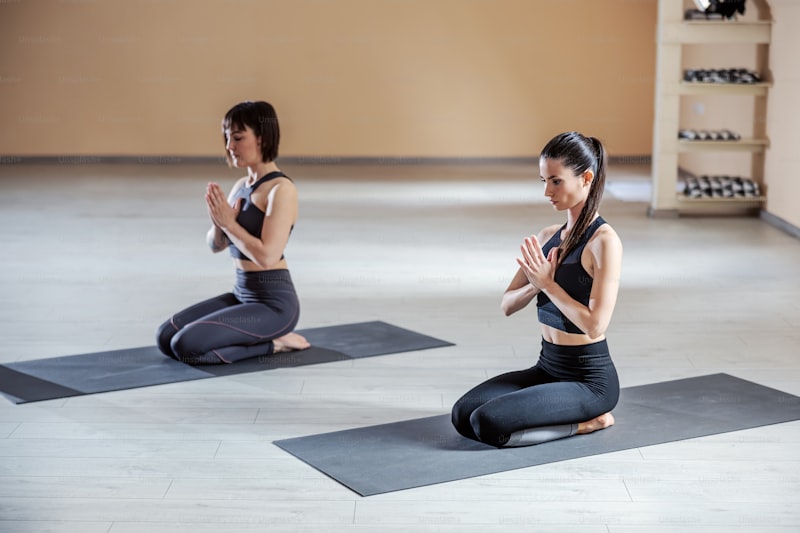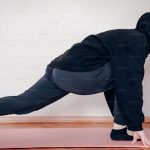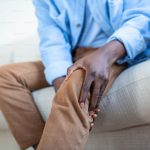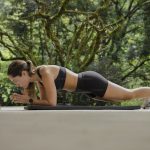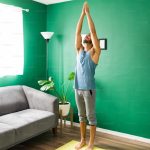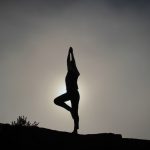We are not all bendy. Even if you are born bendy, that flexibility tends to reduce with age – unless you do something about it. Every yogi knows that yoga is a GREAT way to maintain flexibility as you grow older. And even if you have the flexibility of an ironing board, yoga will help to regain mobility that you have lost over the years. But why do some joints open up more easily than others? And how do you know when to keep working on opening, or when to accept the range of movement that you have? It’s easy when you know how – let me explain.
It’s About How You Are Built
No two people are built the same. Yes, we tend to have the same number of bones in roughly the same places but nature makes us all subtly different. Many people have the same length legs but if you look at the lengths of their femurs (thigh bones) and tibias (shin bones) some will have long femurs and short tibias and others will have short thighs and long shins. Similarly, some folks will have long bodies and short legs but be the same height as people with long legs and short bodies.
If we look more closely at individual joints there are also differences in how they are built that influence their range of movement. The hip is a
great example of this. Our hip is a ball and socket joint. If one person’s hip socket (acetabulum) points a bit more sideways they will find it SO much easier to take a wide-legged stance in prasaritta padotanāsana (wide-legged forward fold) than someone who has downward facing hip sockets. Both down and sideways facing hip sockets are perfectly normal and natural, but the one you have will be part of what determines how wide your legs can go. And no matter how hard we try we cannot change how we are built.
Super Important Soft Tissues
Bones are not the only thing that limits the range of movement in a joint. Every joint has soft tissues holding it together – capsules and ligaments go from bone to bone like guy ropes. They are designed to prevent too much movement in a joint. A healthy joint that has no injuries or disease will have a certain range of movement before the ligaments go tight and stop further movement. This prevents the joint from damage and is a good thing. You would not want to stretch these tissues so much that they no longer protect the joint from damage.
However, ligaments or capsules that have been damaged and shortened can limit the range of movement. For example, the shoulder can get very stiff and painful if the capsule becomes inflamed and tight after an injury. In this instance, as a physiotherapist, I would teach someone to stretch those structures back to regain the range of movement and reduce the pain.
Marvellous Muscles and Fabulous Fascia
The human body is SO much more than bones and joints. Arguably the most important structure in the body is now thought to be the myofascial system. Traditionally we have thought about muscle tightness being the major factor that limits the range of movements. How often do we hear the hamstrings (back of thigh muscles) being blamed for someone not being able to touch their toes? But this is all rather unfair because the muscles are only part of the story.
Muscles are made up of muscle fibres. These fibres are held together in bundles by thin sheets of connective tissue called fascia – imagine cling film and you are pretty close to what fascia looks like. These sheets of fascia all link up to each other to wrap around the whole muscle AND they join up with other soft tissues above and below. For example the fascia in the hamstring muscles links with soft tissues in the buttocks and behind the knee into the calf.
If we look even wider, the fascia links a whole series of soft tissue structures through the body from fingertip to fingertip across the chest; from head to foot; and spiralling round the body. These are called myofascial planes or anatomy trains and a search on YouTube brings up some lovely, gruesome videos of anatomical dissections of them if you are interested.
Motion is Lotion
So, myofascial planes are made up of muscles and fascia, cover large areas of the body and sort of hold us all together. So far, so good. But how do they affect movement?
Myofascial tissues love movement. If you don’t move your myofascial system regularly it loses its ability to move. If myofascia stops moving, the joints also stop moving as much. And this is how we lose flexibility as we age – the old saying of ‘If you don’t use it, you lose it’ is SO true.
The good news is that myofascial mobility is REALLY easy to get back. All you need to do is move. And keep moving. Fascia will gain length and regain its ability to move pretty quickly. That is how we become more flexible in the short space of a yoga class. And, we all know that if you practice every day for a few days your flexibility will improve day on day. But, if you then skip a few days the next time you get on the mat you will have stiffened up again. That is the because not moving means the myofascia loses the ability to slide and glide – it actually dries out and the layers stick together until movement ‘oils’ the system again and it gets moving again.
But What Is Stopping ME Moving?
Each of the structures we have talked about has a distinctive feeling when they limit movement. By listening to the body and responding to what you feel you can work out what is stopping you. By practicing mindfully we can work with the body to open joints in directions that are safe and beneficial. And, more importantly, we will know when to stop pushing into a direction that is never going to change.
All you need to do is ask yourself three simple questions as you practice. And have the humility to take the right action …
1. WHAT AM I FEELING?
Most people will describe either a stretching feeling or a squashing feeling. Stretches tend to be on the side of the body that is lengthening, for example, the back of the legs in uttanāsana (forward fold). Squashing feelings tend to be on the opposite side to stretches – think front of hips in uttanāsana. Squashing feelings are caused by something pressing on something else. It may be your belly on your thighs in uttanāsana or thighs on calves in balāsana (child pose). Though this squashing of soft tissues can be uncomfortable it will not usually cause damage to the tissues that are compressed. You may still want to modify the pose to ease the discomfort though.
BUT, if the squashing feeling is a pinching sensation and over a joint then it is likely that the joint has gone as far as it will ever go. You are pressing bone against bone. This will not damage your joint if you do it occasionally but it could do if you keep on doing it again and again and again over weeks, months and years. So what should you do? Ease off, come away from that extreme range of motion until the pinching goes away. And, more importantly, accept that your joint will never go further than that.
2. WHERE AM I FEELING IT?
Generally feelings in tissues that are lengthening are good and have the potential to increase range of movement. Feelings in tissues being squashed are at best uncomfortable; at worst damaging and in all cases not going to result in increased range of movement so are best avoided.
3. WHAT HAPPENS AS I HOLD THE POSE?
You have decided this is a good sensation so it is most probably a stretch feeling. That stretch feeling may stay the same (good); decrease (really good) or increase (bad). So what does that mean? And what should a good yogi do?
- Stretch stays the same – this is not a damaging stretch and will increase length in the tissue. Hold the stretch as long as it is comfortable.
- Stretch gets less – this is great and means that the myofascial tissues are starting to lengthen in response to the stretch. Go with it – feel free to ease into the range of movement until the stretch feeling comes back.
- Stretch is painful and/or increases – this is bad. It is your body telling you to ease off. Basically you have triggered the damage sensors in the tissues. They have raised the alarm and muscles are starting to contract to protect the body. This will never result in lengthened tissues. It actually gives short, tight tissues and reduces flexibility. You need to ease away from the extreme pose until the stretch is mild and comfortable. Then hold it there.
The Last Word
So, joints limited by bony architecture will not move further and pushing them risks damage. Accept it and move on!
Joints limited by soft tissues have a HUGE potential to move further but be kind to them. Ease into greater ranges of movement slowly, keep the stretch sensations comfortable. Enjoy the feeling of release and the openness that greater flexibility brings. It may take months or years to achieve your full potential in terms of range of movement – so enjoy the journey!

